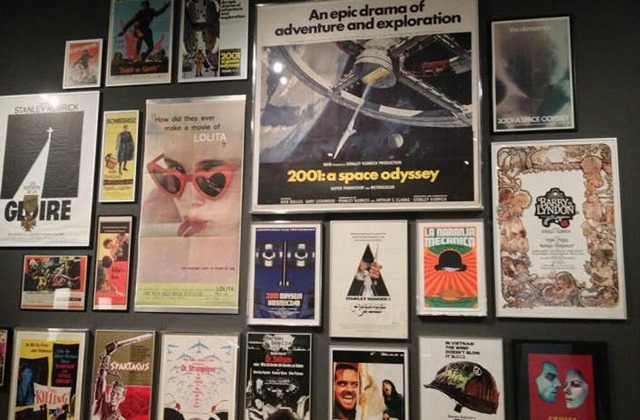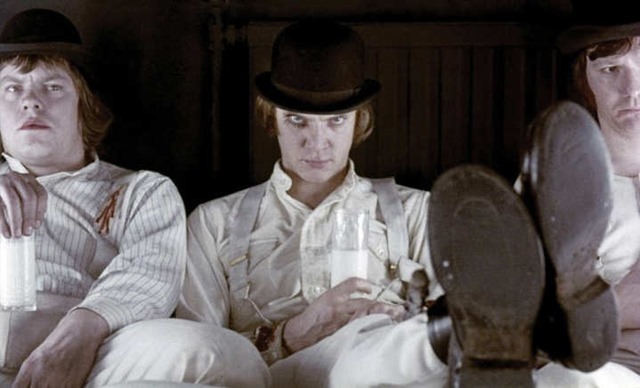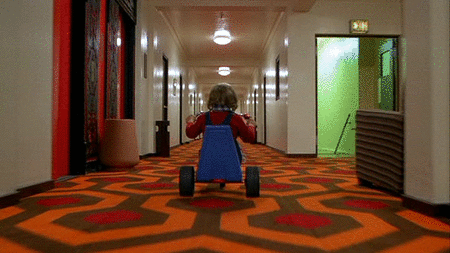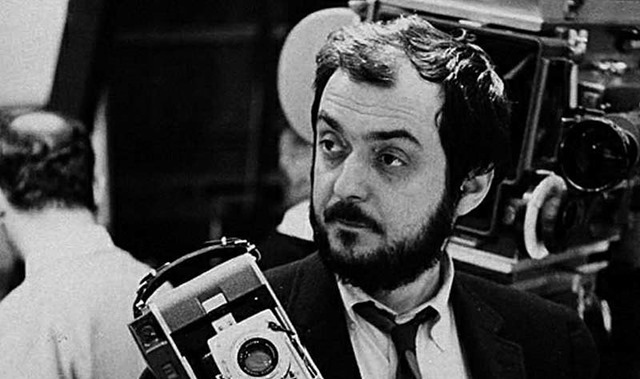
Stanley Kubrick was far from a one-dimensional director. He is noted for being a demanding perfectionist, using painstaking care with scene staging, camera-work and coordinating extremely closely both with his actors and his behind-scenes collaborators.
“This man, in spite of the widespread reputation he had for mastering his means of expression, was misunderstood and misinterpreted every time he made a film. I’ve often asked myself why. In fact, only once did he have unanimously positive reviews, and they were for …Paths of Glory. I’ve never understood how people who are so attached to film never realized that he was number one.” —Jack Nicholson
Kubrick’s great obsession were: the relationship between the artificial and the natural, the constrained and the unleashed, the civilized and the base, the man and the machine.

People misunderstand Kubrick, based on thinking about only one film, or one scene from one film, believing he was anti-technology or anti-nature. In fact, his films, when taken as a whole, are less moralistic than journalistic: he’s reporting on human nature, and he doesn’t believe it’s malleable.
Characters as caricatures
In his films, many of the characters’ traits are highly exaggerated. Examples: Dr. Strangelove (General Turgidson, President Merkin Muffley, the unseen Russian Premier, Colonel Kong [Slim Pickens], and especially Sterling Hayden’s General Jack Ripper), Clockwork Orange (Alex himself, Dim, Deltoid); The Shining (Jack, Lloyd); Lolita (Humbert Humbert, Clare Quilty, Lolita).

Women portrayed as objects
Women are heavily objectified in many of Kubrick’s films. Examples? Some of them (A Clockwork Orange, Lolita, and Eyes Wide Shut) are more obvious, but some less so. For example: in Dr. Strangelove the only woman who actually appears in the film is General “Buck” Turgidson’s secretary Miss Scott, with whom he’s having an affair. Her entire scene is done with her wearing spotted lingerie while briefing Turgidson on a military matter.

Unusual use of zoom
The slow zoom-out comprising the first shot of A Clockwork Orange may be one of the most famous zoom shots in the history of cinema. Kubrick also uses dramatic zooming in many of his other films. Usually it’s unusually fast or unusually slow. and he loved closeups of human faces, caught in extremely primal emotive states
Long tracking shots
Famous tracking shots include those inside the hotel in The Shining following Danny on his bike as he rides through the halls, a very long tracking take moving through the trenches in Paths of Glory, and multiple tracking shots in Clockwork Orange, 2001, and Barry Lyndon.

Wide-angle lenses
Kubrick employs extreme wide-angle lenses in almost all of his films. You can see the distortion at the bounds of the image in tracking shots that use a wide-angle, especially when the camera turns during a tracking shot. He also uses the wide angle lens up close to actors’ faces in some situations to provide a sense of urgency or pathos.
Extremely long takes
Most of Kubrick’s films have shots lasting three or four minutes, or perhaps longer. One example of an unusually long take is the scene in Clockwork Orange in which Alex is checked into the Ludovico building. We see the entire check-in, from beginning to end — something that many filmmakers would simply skip over.
Close up Shots
There are many instances of closeups of human faces, caught in extremely primal emotive states in Kubrick’s films.

Wide shots
In addition to using a wide-angle lens, Kubrick often eschews with close-ups and two-shots in favor of three-shots or even wider shots… making many of the characters blend in more with the scenery.
I think [Alex’s love of Beethoven] suggests the failure of culture to have any morally refining effect on society. Hitler loved good music and many top Nazis were cultured and sophisticated men but it didn’t do them, or anyone else, much good.– Kubrick on “A Clockwork Orange.”
He was obsessed with regimented images (better term than “symmetrical”), such as the military marches in “Barry Lyndon,” the marines marching in “Full Metal Jacket” and the Droogs strolling in formation in “A Clockwork Orange.”

